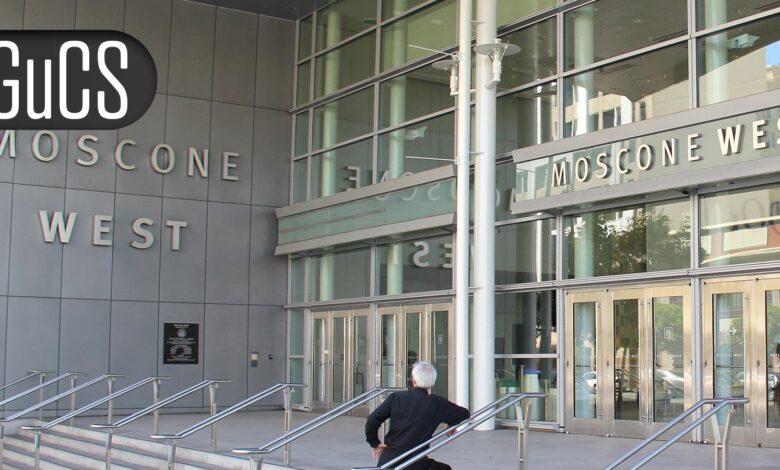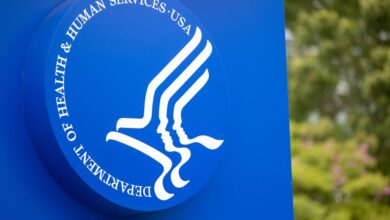Study Supports High-Dose RT, Long-Term ADT as Standard for High-Risk Prostate Cancer

— OS, PFS, cancer-specific survival all improved, with no increase in toxicity
by
Charles Bankhead, Senior Editor, MedPage Today
January 26, 2024
SAN FRANCISCO — Men with high-risk localized prostate cancer lived significantly longer with dose-escalated radiation therapy (RT) plus long-term androgen deprivation therapy (ADT), according to long-term follow-up from a randomized trial.
After a median follow-up of 9.5 years, the 10-year overall survival (OS) rate increased from 65.9% with standard-dose (70 Gy) RT plus 3 years of ADT to 77% with 80 Gy RT. Cancer-specific survival (CSS) and progression-free survival (PFS) at 10 years also improved significantly with the higher dose of RT.
Late-occurring genitourinary (GU) and gastrointestinal (GI) toxicity did not increase with the higher RT dose, and quality of life was similar between treatment groups, reported Christophe Hennequin, MD, PhD, of Saint-Louis Hospital in Paris, at the Genitourinary Cancers Symposium.
“Even if we use long-term ADT, high-dose RT improved progression-free survival, cancer-specific survival, and overall survival in high-risk prostate cancer without increasing toxicity,” said Hennequin. “However, IMRT [intensity-modulated RT] is required to obtain these results.”
“We now have level-one evidence that high-dose RT with long-term ADT must be a standard of care in high-risk prostate cancer,” he added.
Accumulating Data
The findings, from the French Genito-Urinary Tumor Group (GETUG) 18, added to and extended existing evidence that high-dose RT plus long-term ADT yields better outcomes for high-risk prostate cancer. RT and ADT have biologic synergy and co-dependent, complex cytotoxic interactions. Finding the right RT dose to achieve the best outcomes has been a major challenge, according to invited discussant Neha Vapiwala, MD, of Penn Medicine in Philadelphia.
Several studies evaluated long- versus short-course ADT with an RT dose of 70 Gy. In general, long-term ADT achieved better or non-inferior OS.
The Duration of Androgen-Deprivation Therapy (DART) trial pushed the envelope a little further, comparing 4 versus 28 months of ADT and dose-escalated RT ranging between 76 and 82 Gy. Vapiwala pointed out that the DART population was not purely high risk, but a mix of intermediate- and high-risk prostate cancer.
Nonetheless, the primary analysis showed better 5-year OS with long-term ADT, no increase in late RT toxicity, but a significant increase in nonfatal cardiovascular events. Additionally, short-course ADT was associated with a higher rate of unknown-cause deaths.
“Some have postulated that the OS benefit might have been a reflection of an unusually higher number of deaths in the short-term ADT arm that were related to other causes,” said Vapiwala.
By 10 years, the OS benefit no longer remained statistically significant. Nonetheless, the results showed a “clinically relevant” 11.5% absolute difference in favor of the long-term ADT. The increase in cardiovascular events seen at 5 years no longer existed.
“This argues that in the setting of dose-escalated radiation therapy, long-term ADT is clearly standard,” said Vapiwala.
The findings also led to the question of whether ADT can compensate for higher-dose RT. Can the benefits observed in high-risk patients be maintained with a lower dose of RT?
“This is where the work that was presented today [GETUG-18] really helps us look solely at the contribution of the dose escalation of radiation in the context of long-term androgen deprivation therapy, taking that as the de facto standard for high-risk patients,” said Vapiwala. “This was a high-risk population, as 83% of the patients received pelvic nodal radiation or had to be shown to be pathologic N0 on dissection.”
“With a primary endpoint of 5-year biochemical or clinical progression-free survival, you saw that not only are these [Kaplan-Meier] curves statistically significantly separated, but they remained so over the entire duration of the follow-up. Perhaps even more remarkable are the secondary endpoints of prostate cancer-specific survival and overall survival, which were statistically significantly improved,” Vapiwala added.
Noting that the benefits were achieved with no increase in toxicity, Vapiwala said the results are “practice affirming for many, perhaps practice changing for some, if you’re not already offering this.”
GETUG 18
GETUG 18 involved 505 patients with high-risk localized prostate cancer enrolled at 25 French centers from June 2009 to January 2013. All patients received 3 years of ADT and were randomized to an 80- or 70-Gy dose of RT. Hennequin noted that significantly more patients in the 80-Gy arm were treated by IMRT (80.6% vs 58.6%, P<0.001).
The primary endpoint was 5-year PFS, which the 80-Gy treatment arm met (91.4% vs 88.1%). Secondary endpoints included CSS, OS, and toxicity. The updated analysis reported by Hennequin showed a 10-year PFS of 83.6% vs 72.2%, representing a 44% reduction in the hazard for progression or death (95% CI 0.40-0.76, P=0.0005).
The 10-year CSS was 95.6% with 80 Gy and 90.0% with 70 Gy, a 52% reduction in the hazard ratio (95% CI 0.27-0.83, P=0.0090). The 11-point absolute difference in 10-year OS translated into a 39% reduction in the hazard (95% CI 0.44-0.85, P=0.0039).
The incidence of grade ≥2 and grade ≥3 GU toxicity was 19.9% and 3.2% in the 70-Gy arm and 20.6% and 2.0% in the patients who received 80 Gy RT. Late-occurring grade ≥2 and grade ≥3 GI toxicity was 8.8% and 1.6% with 70 Gy RT versus 6.9% and 1.6% with 80 Gy.
-
![author['full_name']](https://clf1.medpagetoday.com/media/images/author/charlesBankhead_188.jpg)
Charles Bankhead is senior editor for oncology and also covers urology, dermatology, and ophthalmology. He joined MedPage Today in 2007. Follow
Disclosures
GETUG 18 was supported by the French National Cancer Institute, the French National Cancer League, and AstraZeneca.
Hennequin disclosed relationships with Astellas, Bayer, Ipsen, and AstraZeneca.
Vapiwala reported no relevant disclosures.
Primary Source
Genitourinary Cancers Symposium
Source Reference: Hennequin C, et al “Long-term results of dose escalation (80 vs 70 Gy) combined with long-term androgen deprivation therapy in high-risk prostate cancers: GETUG-AFU 18 randomized trial” GUCS 2024; Abstract LBA259.


